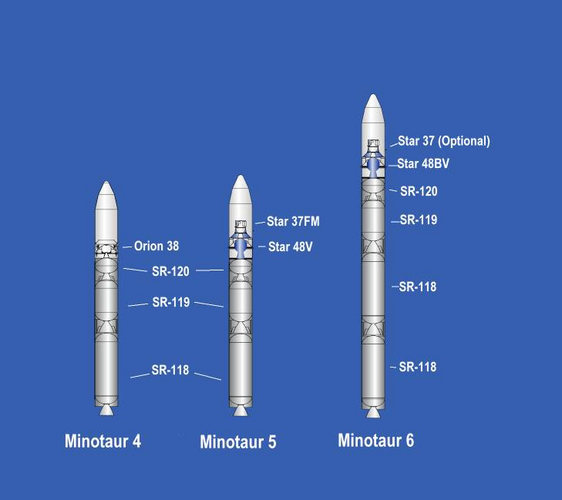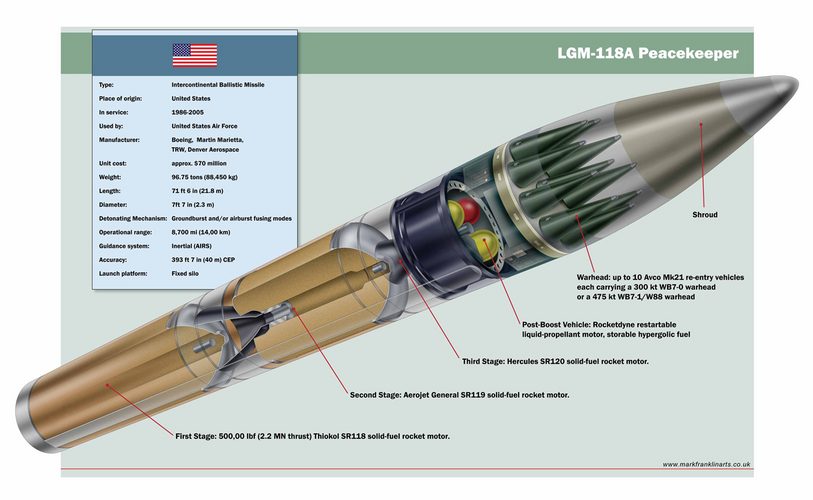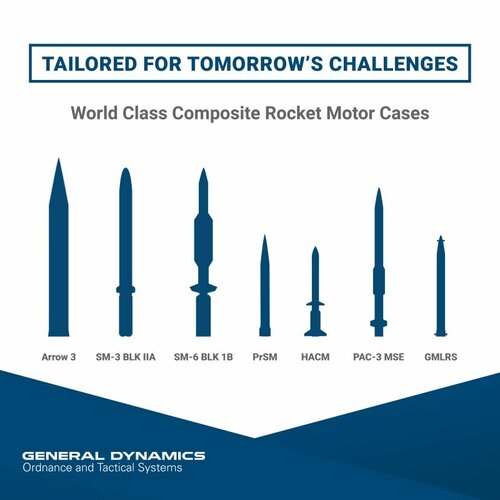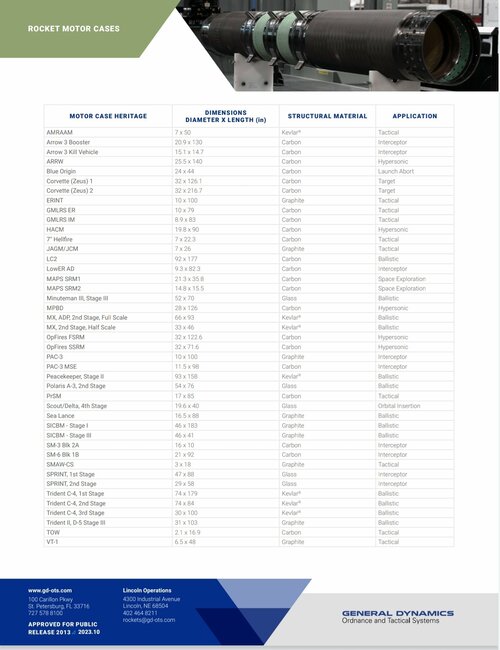Martin Marietta LGM-118 Peacekeeper ICBM / Missile eXperimental MX / M-X
- Thread starter Ronny
- Start date
- Joined
- 21 April 2009
- Messages
- 13,787
- Reaction score
- 7,783
Some interesting systems on that page.
The Opfires FSRM (full size rocket motor?) dimensions but also the MX 2nd stage at 66” diameter. Was this a pre-Peacekeeper ICBM option under the whole “Missile Experimental” program?
The Opfires FSRM (full size rocket motor?) dimensions but also the MX 2nd stage at 66” diameter. Was this a pre-Peacekeeper ICBM option under the whole “Missile Experimental” program?
Forest Green
ACCESS: Above Top Secret
- Joined
- 11 June 2019
- Messages
- 9,641
- Reaction score
- 17,866
The diameter seems wrong, 66 inches is well under the 92 inch (2.34m) overall diameter and only marginally bigger than the MMIII 3rd stage which is 1.3m overall (rocket motor stated at 52 inches, which is roughly the same). In fact 66 inches sounds more like MMIII 1st stage.Some interesting systems on that page.
The Opfires FSRM (full size rocket motor?) dimensions but also the MX 2nd stage at 66” diameter. Was this a pre-Peacekeeper ICBM option under the whole “Missile Experimental” program?
Astronautix also disagrees:
Aerojet solid rocket engine. Peacekeeper second stage.
AKA: Peacekeeper-2. Status: Retired 2005. Thrust: 1,365.00 kN (306,864 lbf). Gross mass: 27,800 kg (61,200 lb). Unfuelled mass: 2,900 kg (6,300 lb). Burn time: 54 s. Height: 5.40 m (17.70 ft). Diameter: 2.35 m (7.70 ft).
More here:
66 inches could be the nozzle base diameter:


Last edited:
- Joined
- 21 April 2009
- Messages
- 13,787
- Reaction score
- 7,783
Could it be a whole other system?The diameter seems wrong, 66 inches is well under the 92 inch (2.34m) overall diameter and only marginally bigger than the MMIII 3rd stage which is 1.3m overall (rocket motor stated at 52 inches, which is roughly the same). In fact 66 inches sounds more like MMIII 1st stage.
Astronautix also disagrees:
More here:
66 inches could be the nozzle base diameter:
View attachment 715936
View attachment 715937
There was an article floating around that I can’t find anymore that said the USAF looked at something like 10,000 or so other ICBM iterations before settling on the final dimensions of Sentinel.
Last edited:
- Joined
- 21 April 2009
- Messages
- 13,787
- Reaction score
- 7,783

Rising to the Occasion: Northrop Grumman and the Sentinel (GBSD) Program | Northrop Grumman
The U.S. Air Force’s Sentinel Ground Based Strategic Deterrent (GBSD) is the weapon system replacement for the aging LGM-30 Minuteman III intercontinental ballistic missile system (ICBM). Sentinel (GBSD) represents the modernization of the ground-based leg of the nuclear triad.
- Joined
- 3 June 2011
- Messages
- 18,412
- Reaction score
- 12,465
You know what your payload is going to be. You know what your fuel is going to be. You know it's going to be a cylinder. How did they arrive at 10s of thousands of variations and would you even be able to tell them apart?
- Joined
- 21 April 2009
- Messages
- 13,787
- Reaction score
- 7,783
8! is 40,320. Is there eight independent factors you are looking at? Probably many more. I'm not saying they are looking at every combination and permutation of everything that goes into designing a new ICBM but getting to the 10s of thousands wouldn't be too difficult IMHO.You know what your payload is going to be. You know what your fuel is going to be. You know it's going to be a cylinder. How did they arrive at 10s of thousands of variations and would you even be able to tell them apart?
TRW POST-BOOST VEHICLE MODEL
MX MISSILE
WITH 6 OR 38 WARHEADS
Title:
Inside Aviation Photography:
Techniques for In the Air & On the Ground
Author: Chad Slattery
"TRW SYSTEMS" "ADVANCED PBV STUDY" "PUSHER TYPE BUS"
HERE THE SAME MODEL
Minute: 00:13:25
MX MISSILE
WITH 6 OR 38 WARHEADS
Title:
Inside Aviation Photography:
Techniques for In the Air & On the Ground
Author: Chad Slattery
"TRW SYSTEMS" "ADVANCED PBV STUDY" "PUSHER TYPE BUS"
HERE THE SAME MODEL
Minute: 00:13:25
Forest Green
ACCESS: Above Top Secret
- Joined
- 11 June 2019
- Messages
- 9,641
- Reaction score
- 17,866
Similar threads
-
-
-
-
Martin Marietta Laser Guided Seeker
- Started by Stargazer
- Replies: 2
-
MX Missile (Peacekeeper/ LGM-118) Transporter Emplacer (TE) Fate?
- Started by Ironmiked
- Replies: 11


